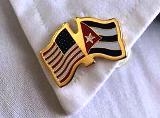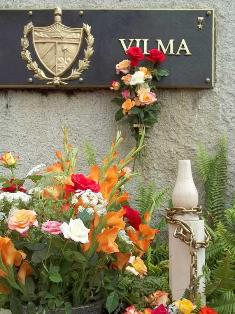While that word was not used in print until 1953, there were always conflicts of interest on a personal and global level in the history of humanity finally found a linguistic approach to the subtle struggle between contenders.
History books tell the two countries common episodes almost always from different points of view: the liberation wars of the Thirteen Colonies, the Cuban revolutionary process since 1868, political relations in the first half of the twentieth century and provocations from Cold War after 1959.
But beyond all the conditions that caused this relationship so virulent less than 90 nautical miles from its shores, there are clear examples of overlap peoples political, economic and any disputes.
Names like Henry Reeve and Thomas Jordan for the US side and the prominent Cuban Juan Miralles, who even died at the home of George Washington.
Precisely, the first President of the United States and considered Father of the Nation in the country said the Cuban to the death occurs: “In this country you will want universally and likewise his death regret”, reported Cuban historian Eduardo Torres-Cuevas.
The coordinated assistance in support of the war of the Thirteen Colonies by Miralles included repairs and supplies insurgent Squadron Commodore Alexander Gulon in the shipyard and arsenal of Havana.
Just at that site of this city, he wrote the famous Emilio Roig de Leuchsenring remains a plaque that reads: “Here was the Arsenal of Democracy during the American Revolutionary War -1778 – 1781. The “Medley” the “Carolina” and other ships of the squadron of Commodore Alexander Gillón were repaired, armed and supplied in this Arsenal, and here came the expedition commanded by Juan Manuel de Cagigal, of which formed part the Cuban militia who fought for the independence of the United States in Louisiana and the Floridas.”
Cuba was decisively important for the independence of the Thirteen Colonies in North America. The United States had valuable representatives of their best sons in the struggle for Cuban independence; but only in books dispute conditions are highlighted when there are genuine expressions of solidarity between us.
“Cuba has always understood the subtlety well. Many things unite us in history and in culture, “said the historian of Havana, Eusebio Leal in an interview where he also noted that Cuba was never” anti-American sentiment, but an anti-imperialist sentiment.”
These manifestations of heroes preceded the history of thousands of Cubans through the years as manifest the historical leader Fidel Castro, from the early years of the Triumph of the Revolution:
“The problem with Cuba is the problem of black South United States; Cuba’s problem is the problem of ‘wetback’ working in the area with Mexico; Cuba’s problem is the problem of progressive intellectual of United States, is the problem of the American worker, the American farmer and the American people…”
A breakthrough in the geopolitical relationship between the two countries opened the simultaneous speech last December 17, the presidents Raul Castro and Barack Obama where they announced the restoration of diplomatic relations between the two countries.
Day marked for the citizens of both countries with a commitment to learn from the mistakes of history to bury definitively the vocabulary of our peoples and political trends that lead us to the point of being amienemigos, with actions such as the greetings of presidents Raul Castro and Barack Obama in Panama; or the hoisting of our flag one to 90 miles from each other, and one in Washington, and the other provides up to horn in Havana.
Translated by: Daysi Olano Fernandez





